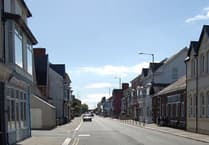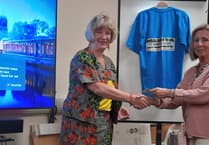Wales’ role in the Second World War and its effect on the people and landscape of the nation has been severely neglected, says Quentin Deakin, author of Wales in World War 2, published by Y Lolfa.
Taking a fresh look at the subject, Dr Deakin, who lives in Tywyn, argues that neither Welsh nor English historians have shown the extent to which Wales was vital to the British war effort.
The author said: “Previous books have tended to concentrate on south Wales or have rolled together England and Wales into an Anglo-centric national history. As in England, the whole of Wales was caught up in the demands of war in multiple ways. Once you start to look, wherever you live in Wales, an impressive war heritage can be found, leading some archaeologists to conclude that the world wars, occurring in quick succession, made a greater impact on the physical landscape of Wales than any other event of modern times. It’s impact on the people of Wales was equally dramatic.”
Wales in World War 2 is a comprehensive account which looks at the impact of the conflict from every angle. The author has drawn on local studies, archival resources and oral histories, including fresh interviews with those who were children during the war. Sources from across the country and beyond have been collected and assembled like a jigsaw to demonstrate that far from being peripheral, Wales was central to the war effort in several ways, including hosting secret weapons establishments of global significance.
Dr Deakin added: “The war provided employment for millions of civilians, in war factories, foundries and mines, the civil service, engineering, technical instruction and the creative industries. It will be seen that in some of its weapons research, Wales was ahead of the rest of the world. It was also vital to the war economy, had a key role in the training of forces, and hosted evacuations of vital importance for the survival of the country.
“A disproportionately high number of secret military sites were located west of Offa’s Dyke. However, all assumptions that it was a safe haven were proved wrong when it too became a potential target for invasion in 1940. Social changes were also bound up with the war, as the movement of allied armies and evacuees caused the greatest international migration the Principality had ever seen, challenging social and cultural norms and changing the demography of Wales.”
Chapters cover every region of Wales and every aspect of life, for both military personnel and civilians.
As Sian Nicholas, professor of modern British history at Aberystwyth University, says in her foreword to the book, this is “…not the generalised wartime ‘Britain’ still typical of so many narratives, but an account focused on the people, the communities and the geography of Wales… Wales is presented here not just as a constituent element of the British war effort in World War II, but as a distinct entity for which the war represented unique linguistic, social, political and cultural challenges.”
The book contains a series of original maps that vividly illustrate the extent to which the war physically impacted upon every region of Wales.
Part 1 considers Welsh involvement in the wider British and international context.
Part 2 looks at the impact on each region of Wales.
Part 3 discusses the perspective of all involved: civilians, factory workers, children (including English evacuees), national and regional politicians, soldiers, pacifists, writers, film makers and artists.
Part 4 investigates local community life, how film, radio and the arts were used in propaganda aimed at improving relations with England, and at the legacy of the war.
Kate Sullivan, project co-ordinator of People’s Voices in a People’s War: Aberystwyth, 1938-1945, said the book is “comprehensively researched, with an eloquent yet easy-to-read narrative, this book is highly recommended for anyone wishing to learn about a neglected piece of 20th century history: the experience of World War in Wales.”
Dr Neil Evans, honorary research fellow, Bangor University, said it is “a well-researched, well-written account and analysis drawing on a wide range of sources. It provides international context but also the experiences of regions, communities and individuals. A major advance in writing on this still rather neglected topic.”
After completing a doctorate on early county history writing at Aberystwyth, Dr Deakin made his career in the secondary school sector.
War and society in 17th century Europe was a key theme of his first book, Expansion, War and Rebellion (Cambridge, 2000).
As a keen supporter of local history, in 2018 he was a founding member of the Tywyn & District History Society, which in its first year created a popular town trail and information boards in Tywyn.
There is a chapter in the book devoted to Cardigan Bay and the hinterland, which was heavily involved for training purposes and the trialling of new technology. This area is covered at length in the book, which should be of great local interest.
Wales in World War 2 is available now, and an official launch will take place on Saturday, 18 November, with Clocktower Books, Tywyn at the adjoining Retreat Bar, Market Hall, High Street.
The event will start at 10am and finish at midday. Light refreshments will be provided.
The event will take the form of a short talk at 10am by Dr Deakin, followed by questions and signing.
The Tywyn launch will be followed by other promotional events at Machynlleth, Mold, Porthmadog and Swansea, and elsewhere.
Hear what Dr Deakin has to say about the book and its launch in our video above.





Comments
This article has no comments yet. Be the first to leave a comment.